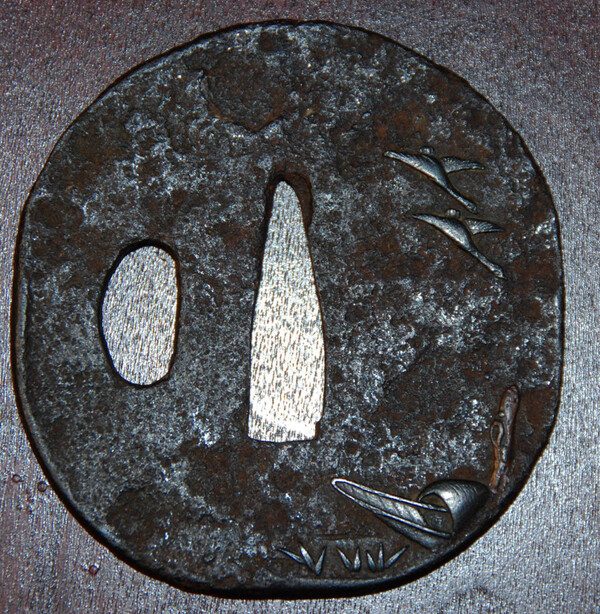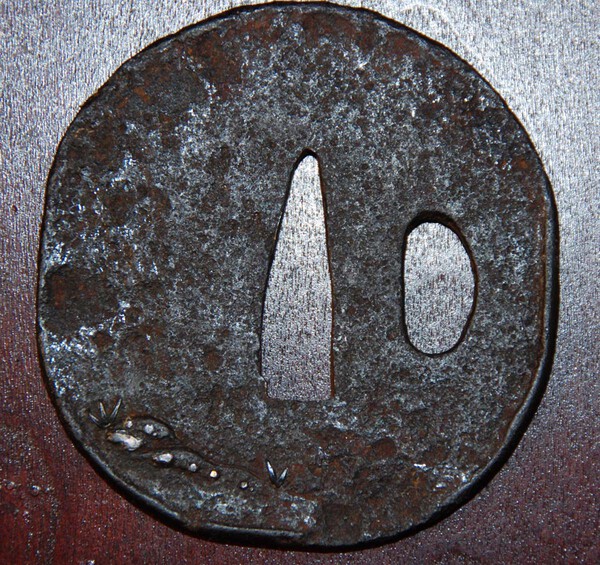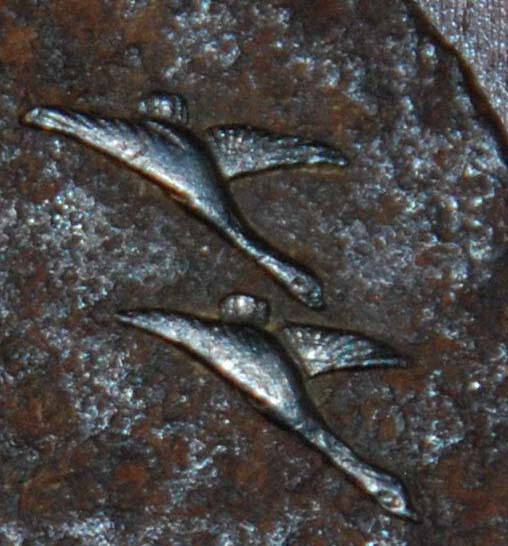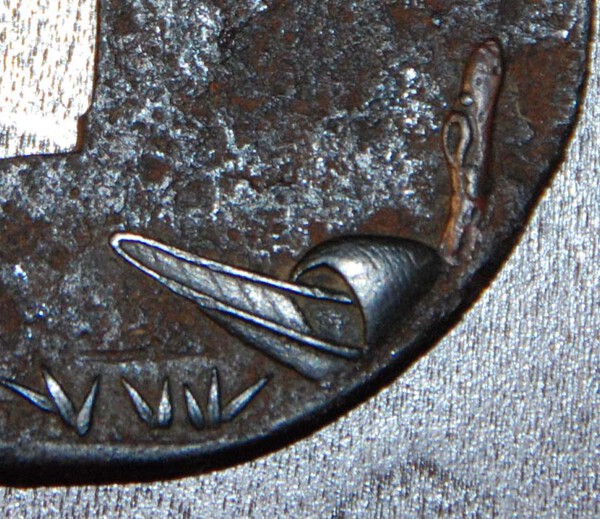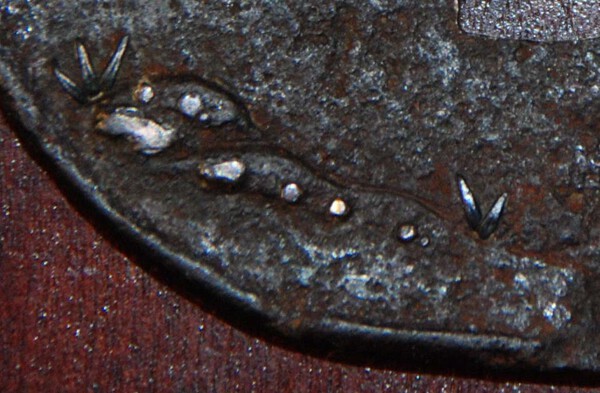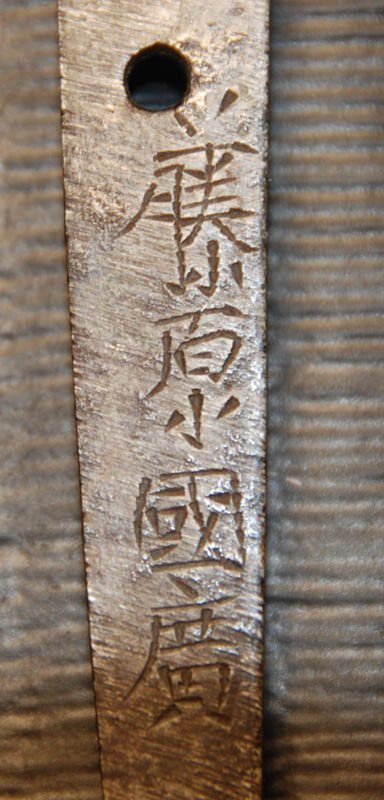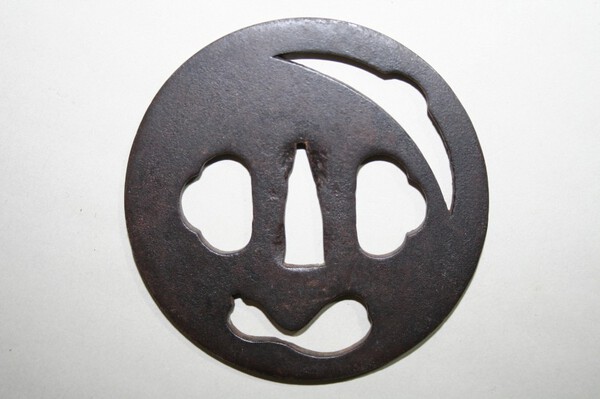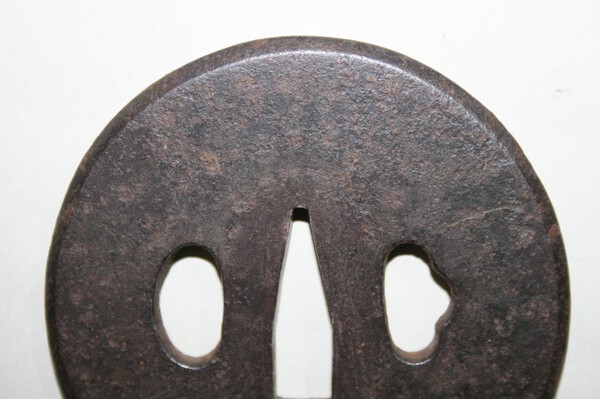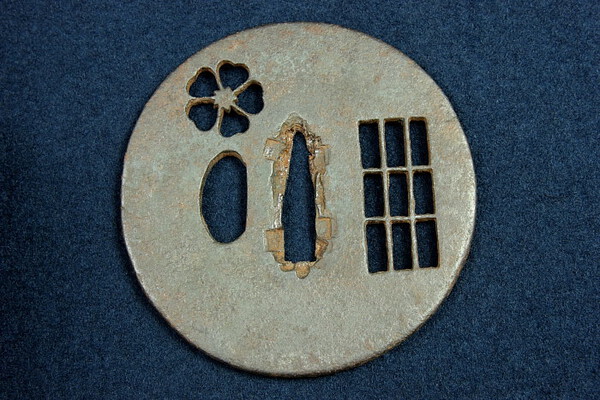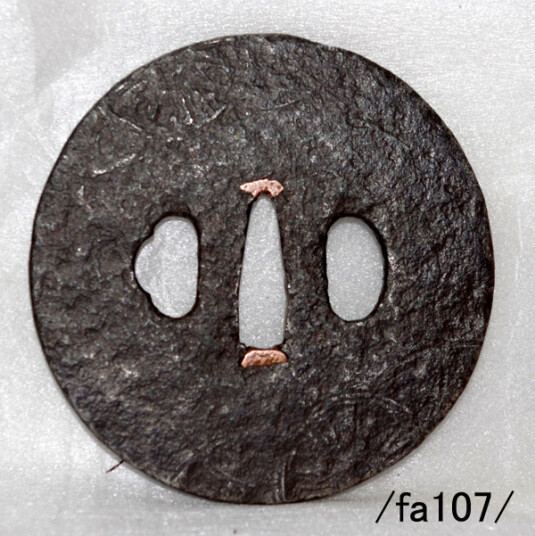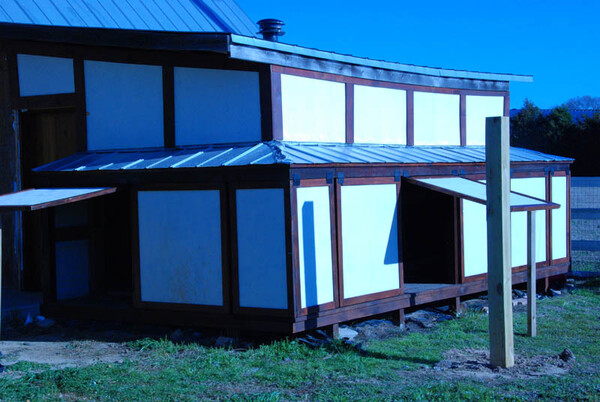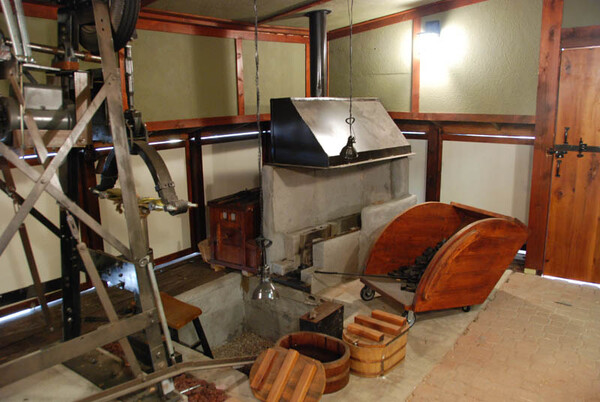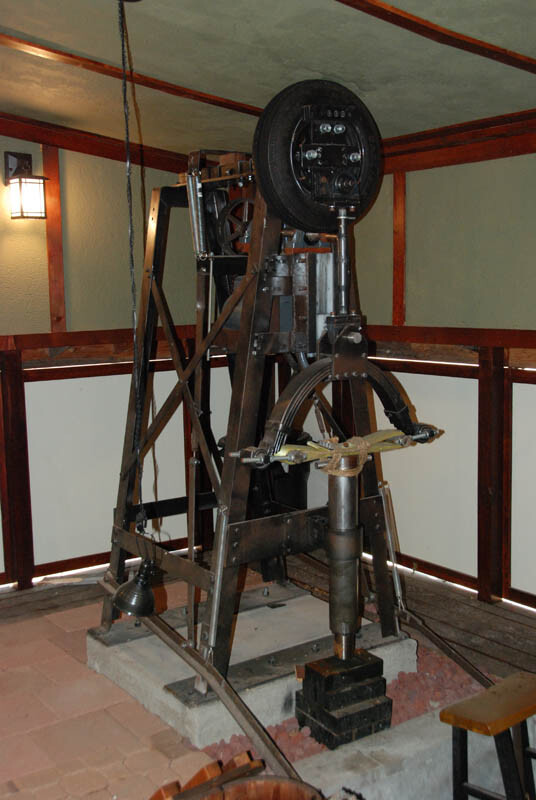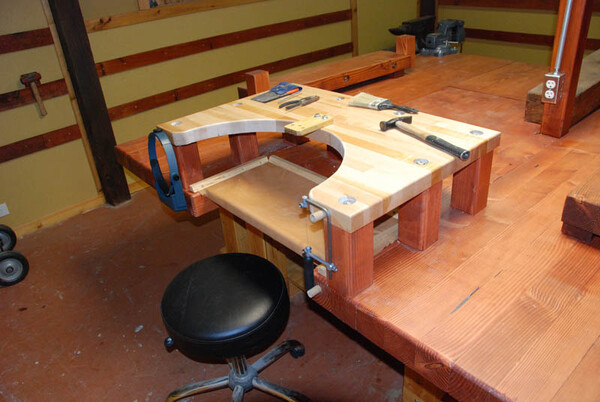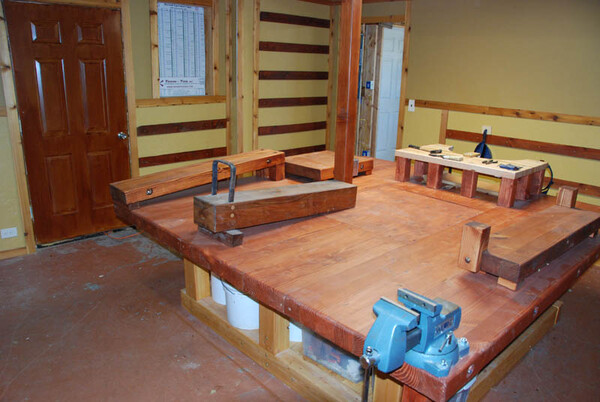-
Posts
82 -
Joined
-
Last visited
Everything posted by Danocon
-
The mune is forged in after the sunobe is formed and before the bevels of forged in. That way the full thickness of what will become the edge can rest on the anvil while the smith hammers the shape of the mune. It does not take lot of force to move this small amount of metal but still it would ruin the shape of the thin edge if done after the bevels are forged in. It is refined later, as is the rest of the blade, with grinder, sen, files, stones etc.. Anyway, that is what I have observed from the few smiths I have worked with and do the same myself.
-
Here is a modern way to do it. Charcoal fire is more traditional.
-
I have been buying a few old tosho style tsuba to get a sense of the iron mostly. You could not call this little tsuba tosho but I like it and the price was right. Now that I have it I like it better. I have no idea about age or school but it kind of speaks to me. The birds I would assume are cormorants and a partial boat in the lower right. No idea what the upright copper colored object is. I like the narly iron and the irregularly raised edge. The best part is how it feels. It is kind of silky smooth despite the narly iron. There is really small gold dots in the birds eyes. 6.1cm x 6.4cm x 3.6mm thick
-
This is key. Tools are tools. Every artist/craftsman makes his/her own decisions how to use the tools available and how to present/sell/preserve their art. For what it's worth-I remember an unusually candid conversation after many glasses of Rebel Yell (yes, you heard me correctly) whiskey in Dallas during the 80's. Acid was not left out of the conversation. The next day, in the sober light of morning-that conversation never happened. This really changes nothing. Know what you are looking at and know who you deal with. I myself do not know enough to comment on the use of acid and the resulting effects, but do not begrudge a master his tools. Is nihonto only nihonto if no power tools are used in the making?
-
Thanks David, More than the hammer marks I like the granulated look of the plate. I am enjoying the Tosho Tsuba with Gumbai I got from you. Despite the rough texture I was surprised at how smooth and pleasant it feels to the hand.
-
Kodai Tatara update Creeping along towards the goal. Steampunk sneak peak. and Steam punk Revealed
-
Not sure if this straying from the purpose of this post but as always I am interested in the quality and character of the plate. My feeling is that the granulation and pits where inherent from the beginning-Albeit enhanced with age. Would this be a true statement? Really appealing tsuba David.
-
My first time to translate a mei. I used the resources on NMB plus help form the web I read it as Fujiwara Kunihiro.The strokes look crude to me. My guess is it is a forgery of a famous smith. So, I have shared all I can figure out to this point. Any clues as to how to continue to evaluate it?
-
I have had this blade for maybe 15 years. I don't even remember how I got it. Forgot all about it. I found it digging in a drawer this past week. I had never even taken the tsuka off. Looking at it again the shirasaya was not half bad. One one side a bone? insert was cracked but fairly well done. The other side has badly done replacement. The blade is kind of skinny The habaki is also not half bad. Somebody has taken a power buffer to it but there is some evidence of a hada. No hamon can be discerned.
-
A word of warning and in keeping with the spirit of protection and guardianship. Sayashi will have a protected area (padded box-etc.) to put the blade when not being used as a pattern or trial fitting. Yes, a poorly made saya can harm a blade but tools and careless handling carry much more potential for catastrophic damage. This would be the single biggest reason I would caution against amateur saya making. The sayashi not only learns the necessary skills to make a proper saya but also the absolutely essential habits to keep the blade safe. It takes only one dropped chisel to chip the edge of an irreplaceable treasure.
-
Tricky call but I would agree with Brian this is not a how to forum. PMs sent.
-

What to bring to Chicago?
Danocon replied to Peter Bleed's topic in General Nihonto Related Discussion
Carpenter tools? Usable or collectable? Looking for usable Enquiringly mind wants to know. -
Grey, No, just very close examination under magnification. Looking at the character of the iron, any folding of the material and a feel for the texture. Not a huge amount of information but small pieces add up.
-
I am currently bidding on several inexpensive tsuba on ebay just to examine the iron. Any artistic or collector merit in any of these? All claim to be Edo period.
-
John, I have gone to great pains to make it fire resistant. Except for the trim and the one door all the walls are either concrete Hardiboard or slate. Floor is concrete and concrete tiles. Besides it is just a fireplace on steroids.
-
Thanks Chris. Well, that makes sense now that I think about. Ji and Gi are pronounced differntly-yes?
-
Thought I would resurrect this to show finished Kagi-ba and fittings/finishing/saya room are finished. Smelter shelter going up now.
-
Beautiful. Thanks Paul. Great pictures. I have added them to my library. Any place you guys can point me too as to texts/diagrams that describe how chikei and ji-nie are formed? There is more going on here than just tight hada. Folding enough times to appear patternless would result in a massive loss of material based on what we know in this day and time. I can't see them wasting material in such a reckless way. That leaves us with a different process than what has been used in recent times. The tatara used today was developed around 1500 I think. A smith I worked with, Taizoh Nakagawa would not use the modern Tamahagane. He would travel around looking for old burned out shrines and salvage the iron and make orishigane from it. Still this was modern iron relatively speaking. I have a design for a small Kodai tatara ready to go up as soon as I build the shelter for it. But, it is based off of information I have found online and some old books, But not old enough. However, it is a good place to start. Understanding how chikei and ji-nie are formed will allow me to evaluate the product of the furnace.
-
It is a trap to think that the shape of the stone shapes the sword. As in all things, looking from the outside into a complex art-what we think we know to be true is almost never right. The polisher shapes the blade and he shapes the stones to facilitate the process. A rounded stone (convex) means that only a small part of the stone and blade are in contact with each other. This affords more control to the polisher. It also means there there is no flat reference plane on the stone to help keep the blade true. The blade comes out of yakire (hardening) with the edge about 1.5mm thick. The polisher or even the smith will foundation polish this edge to sharp in zones. Zone 1 is the edge itself. Zones 2-6 vary in width and curvature (niku) all the way to the shinogi. The width and curvature of each zone is totally up to the polisher. I cannot emphasize enough that the trueness, curvature and definition of the blade is totaly dependent on the polishers skill and "feel" as he moves the blade against the stone. In my opinion this is far more difficult than the actual forging and maybe the highest example of manual control of a surface. I can forge and shape a blade but true polishing is very daunting indeed.
-
Sorry, First thing that popped into my head was Batman. Should not mix serious study with sipping a nice Reposado Tequila. I will be quiet now.
-
I find the Bizen Kanemitsu absolutely stunning. The hada is described as ko-itame with fine ji-nie. For my own edification, looking at picture #18 how is this different from Nashiji-Hada? I really need to get one with nashiji hada in hand to see for myself.
-
I gave lot of thought to the PH issue when I built mine. I wanted to closely approximate the shape of the hammer that a hammer man would use. Most western power hammers use a form of drawing dies. That is the hammer and anvil are radiused in one direction. Hammering moves the material in one direction-lengthwise. A hand wielded hammer is basically round with a spherical shape to the face. When struck the material moves is all directions. The smith compensates for this by alternatly cutting and folding across and with the grain. The smaller the spherical radius the more easily the material moves. This also deforms the material more in the area stuck-smaller and deeper dimples. This will distort the layer structure. If the blade is then filed and scraped to remove the dimples the circular whorls characteristic of Mokume hada will result. In practice the smith will strike a balance with the shape of his hammers both powered and hand. I chose to emulate the round type hammer in my PH build. You can see some videos of it here. http://www.youtube.com/user/Katanabuilders The video In particular shows how the shape of hammer and anvil affect the way the metal moves. Power hammers used by modern Tosho also use the round hammer head. I have to believe that there is at least some effect on the steel structure imparted by the heavy hammers-hand or powered. As Ford so eloquently put it-all tools have to be evaluated for use and affect. As tools (hand or powered) become more complex decisions are taken away from the artist/artisan/craftsman. It is the millions of minute decisions made by the artist along with his/her knowledge and skill that dictates the results. The fewer the decisions required the less individual the result. To answer the question-The craft is still undoubtedly the craft.
-
Sadly-the young samurai knelt next to his fallen friend. Gently he removed the hilt of the broken sword from the dead man's grasp-remembering the day he had acquired it. The name on the tang had not served him well. He had pointed out the various flaws to his brother in arms but he saw only the clothing it wore. Good is good gentlemen.No matter who made it- Last week or 800 years ago. This is a fine and informative discussion. Quality has to be the first and foremost point. As Jean said-If the wine tastes like shiite what matters the vintage?
-
Thank you Kunitaro-san, I find these Tsuba very interesting. I can appreciate the more finely worked tsuba but just the two elements of material (iron) and patina of the tosho style holds a world of possibilities.


